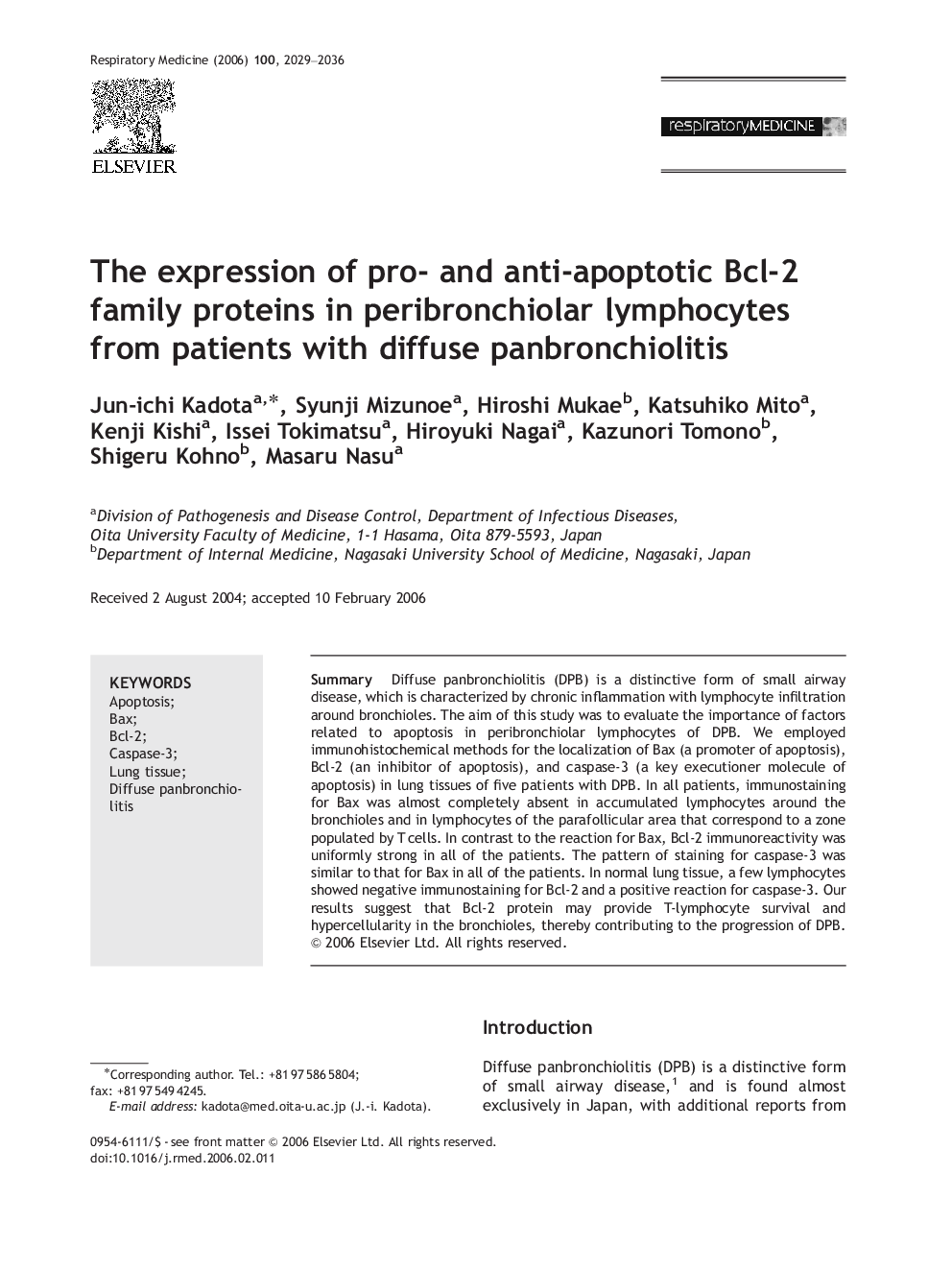| Article ID | Journal | Published Year | Pages | File Type |
|---|---|---|---|---|
| 4212135 | Respiratory Medicine | 2006 | 8 Pages |
SummaryDiffuse panbronchiolitis (DPB) is a distinctive form of small airway disease, which is characterized by chronic inflammation with lymphocyte infiltration around bronchioles. The aim of this study was to evaluate the importance of factors related to apoptosis in peribronchiolar lymphocytes of DPB. We employed immunohistochemical methods for the localization of Bax (a promoter of apoptosis), Bcl-2 (an inhibitor of apoptosis), and caspase-3 (a key executioner molecule of apoptosis) in lung tissues of five patients with DPB. In all patients, immunostaining for Bax was almost completely absent in accumulated lymphocytes around the bronchioles and in lymphocytes of the parafollicular area that correspond to a zone populated by T cells. In contrast to the reaction for Bax, Bcl-2 immunoreactivity was uniformly strong in all of the patients. The pattern of staining for caspase-3 was similar to that for Bax in all of the patients. In normal lung tissue, a few lymphocytes showed negative immunostaining for Bcl-2 and a positive reaction for caspase-3. Our results suggest that Bcl-2 protein may provide T-lymphocyte survival and hypercellularity in the bronchioles, thereby contributing to the progression of DPB.
